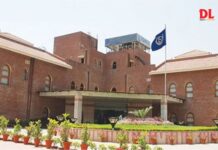
Ashok Mittal, Chairman, Lovely Professional University (LPU) is a visionary who wants to bring back the traditional education values to modren pedagogy. In an interview with Sharmila Das, he talks about role of ICT in filling the gaps in education
 What was the inspiration behind the launch of the Lovely Professional University?
What was the inspiration behind the launch of the Lovely Professional University?
India had been the epicentre of learning thousands of yearsago. Taxila, alanda, Vikramshila enjoyed the status of premium seats of knowledge and education and attracted scholars from far and wide. Unfortunately, we failed to retain the knowledge as these Universities faded into oblivion. The pivotal inspiration behind the launch of this University is to bring back the glorious past of India in the realm of higher education, and recreate the magic of Taxila University in context of present times. We are inspired by the great heights of learning achieved by these Universities in various disciplines like medicine, mathematics, astronomy etc. and want to bring back the status that India enjoyed as the “Knowledge Capital” of the world. On an optimistic note, I declare that we are well on the course to establish ourselves as higher education giants, and will break into the top 50 Universities of the world in next 10 years.
What steps has the institute taken to embrace ICT in its education system? What benefits has the institute experienced?
The University has arranged a multi-faceted digital podium that features an IT-based University Management System, Learning Management System, Wi-Fi Campus, Electronic Surveillance System and many others. We have an extensive ERP programme put in place which is used as a common platform for almost all of the official communication and interactions – whether administrative or related to teaching (between the students and the teachers). Every single student and teacher has his/her own intranet account in the University, where all the information of his relevance is dispensed. Right from the morning, the students and the teachers hook on to the ERP pedestal – the daily attendances are registered online, notes are uploaded (by teachers) and downloaded (by students), the students post their queries online to which the teachers respond via the same software. Not only this, the performance of all students is assessed online as their scores are displayed on the intranet, all important notices and information is also shared online. Records such as availed/pending leaves, salary, daily assignments, work progress chart, etc. are recorded online. This helps the students/employees/management to have crystal clear, transparent and easily decipherable information to plan for their charted work and execute their duties and responsibilities in a more efficient fashion.
How ERP is indispensable for the overall functioning of your institute?
Given the scale of operations of the University (25000+ students and nearly 600 faculty members), and a deep penetration of ITC deployment in majority of working domains of the same, ERP becomes more than just being indispensable. ERP is the backbone of lion’s share of execution and monitoring undertaken by various level of management hierarchy and we feel that it is virtually impossible to run not just special projects, but daily affairs of the University in the absence of ERP solutions that we have put in place.
What do you think about STEM Education in India?
In India, we are fortunate to have an academic culture in schools that helps in providing a constant supply of good students with high aptitude in academic disciplines of Science, Technology, engineering and mathematics. But to be fair in all means, we still lack the required level of inputs at the end of education providers or for that matter, say entire education system that can help us to extract the benefits to their potential. STEM Education in India has taken roots, but it has not penetrated that deep.
























